Having trouble sleeping? You’re not alone. 43.7 percent of Americans ages 18 to 25 have unintentionally fallen asleep during the day at least once in the past month, and 4.5 percent have nodded off while driving in the past month. Young people, old people, and everyone in between aren’t really getting the recommended amount of sleep: 7-8 hours a day.
Sleep deprivation is actually considered to be a serious public health problem. So let’s combat it!
If you’re worried about your lack of sleep and want to avoid pills, here are some of our top tips for how to go to sleep on your own.
Step 1: First of all, acknowledge that not sleeping is actually pretty bad for your brain.
 Learn more by reading the full infographic.
Learn more by reading the full infographic.
Step 2: Actually try some of those obvious, typical tips everyone tells you.
 See the full list here.
See the full list here.
Step 3: Use the ACT method and develop “wind-up” and “wind-down” routines.
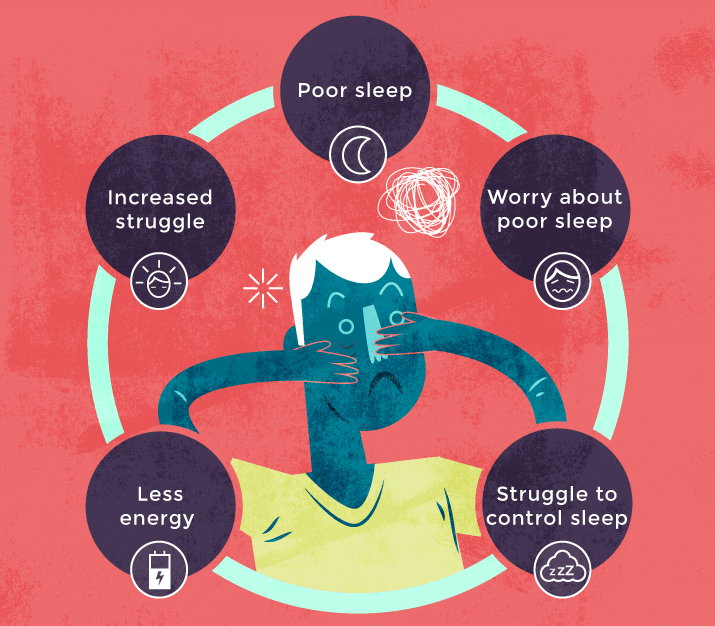 Learn the method on the full infographic here.
Learn the method on the full infographic here.
Step 4: Fight your insomnia the natural way: with all-natural sedatives.
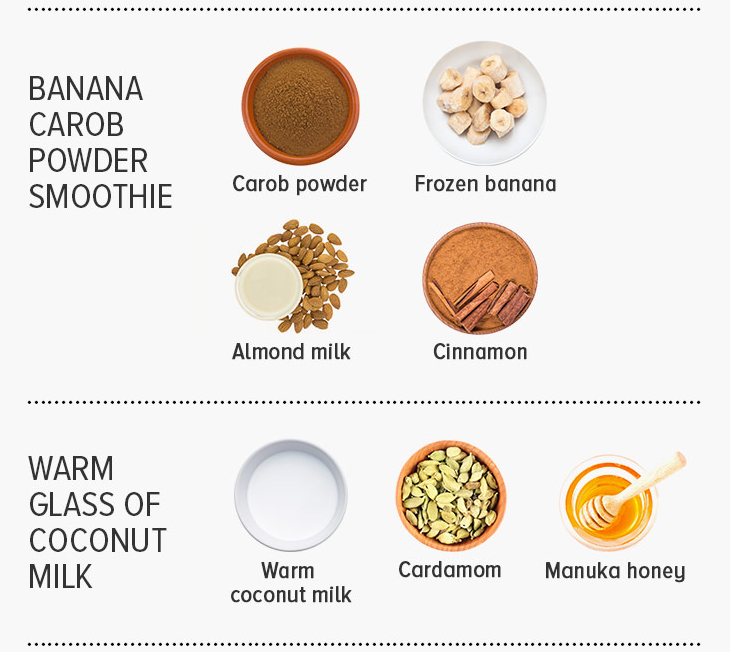 Check out the full list of recipes to see if they work for you.
Check out the full list of recipes to see if they work for you.
Step 5: Have anxiety or PTSD? Practice breathing exercises about a few minutes before you go to bed by timing them with these GIFs.
 All of these are great for falling asleep as well as reducing stress and anxiety.
All of these are great for falling asleep as well as reducing stress and anxiety.
Step 6: Embrace an unusual sleep cycle. (No, you don’t have to do 8 hours at a time.)
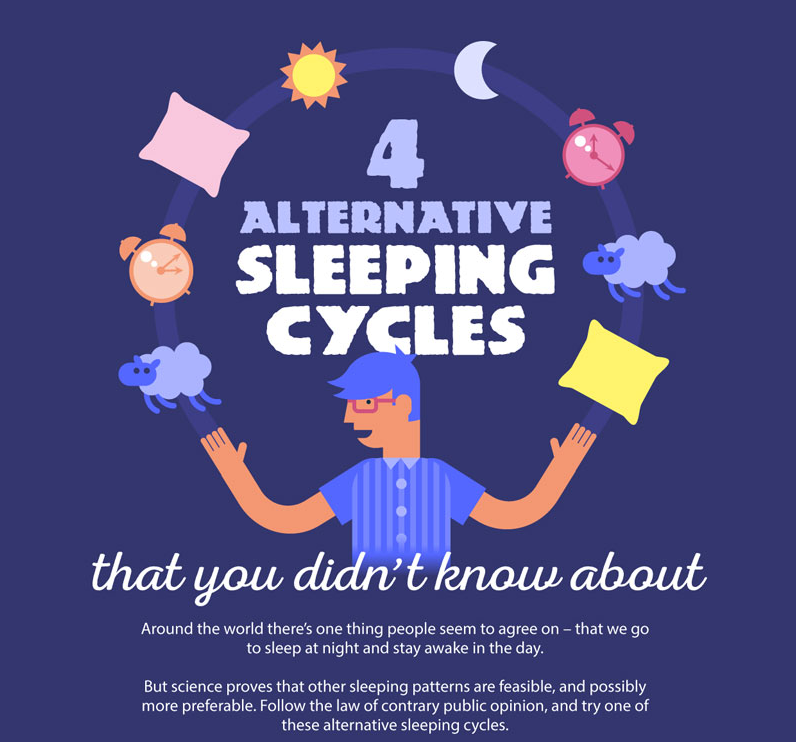 To embrace your unusual sleep schedule, see the full infographic.
To embrace your unusual sleep schedule, see the full infographic.
Step 7: If nothing is working so far, consider the possibility that you have one of several common sleep disorders (such as sleep apnea) and seek help.
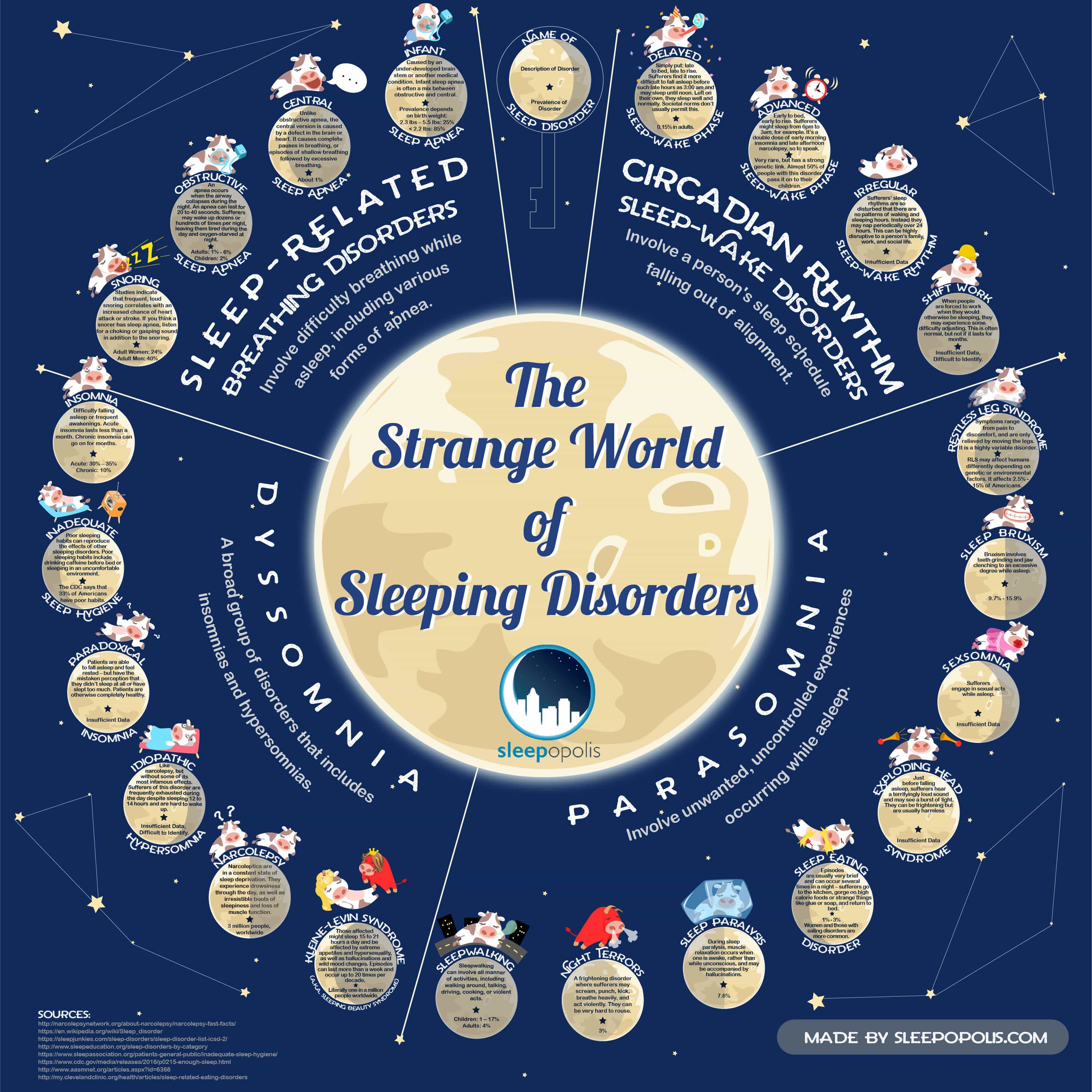 Click image to see full size infographic or visit the original source.
Click image to see full size infographic or visit the original source.
If you do have a problem, don’t be upset. You’re one of the 50 to 70 million U.S. adults who have a sleep or wakefulness disorder. You’re not alone!
Here are some resources for learning about sleep disorders:
- Getting a Sleep Apnea Diagnosis: American Sleep Apnea Association
- Understanding Restless Leg Syndrome
- Narcolepsy Network Fast Facts
- The Official Sleep Disorder Publication from the National Sleep Foundation
- National Library of Medicine Resources on Sleep Disorders
- Getting a Good Night’s Sleep: The American Psychological Association
- Sleep Tips for Kids
Getting a diagnosis can be the most important step you can take to getting real sleep!
BONUS: How Sleep Actually Works
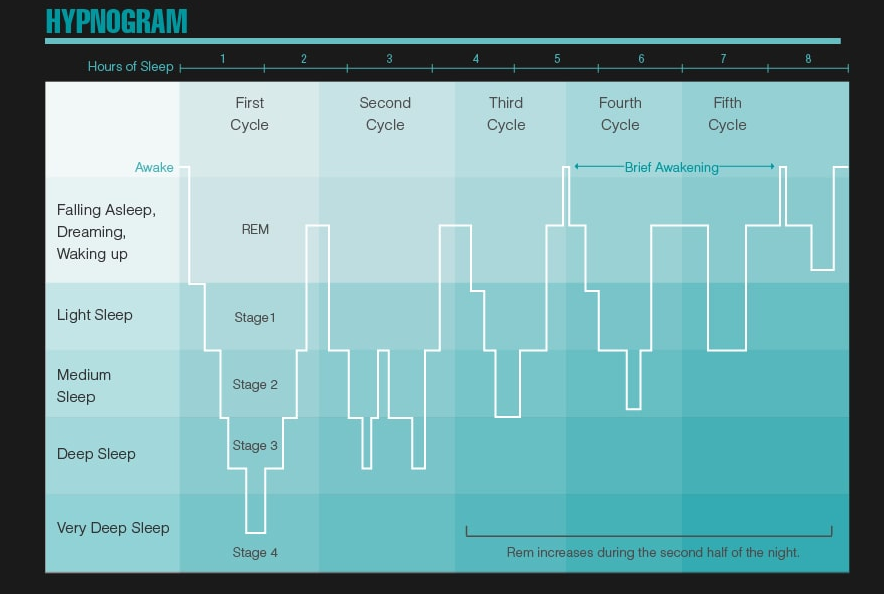 Discover how sleep really works here.
Discover how sleep really works here.
BONUS BONUS: Maybe don’t count sheep, but giraffes! (Adorable animals have unusual sleeping patterns too!)
 Click infographic to view full size or check out the original source to read about it in detail.
Click infographic to view full size or check out the original source to read about it in detail.


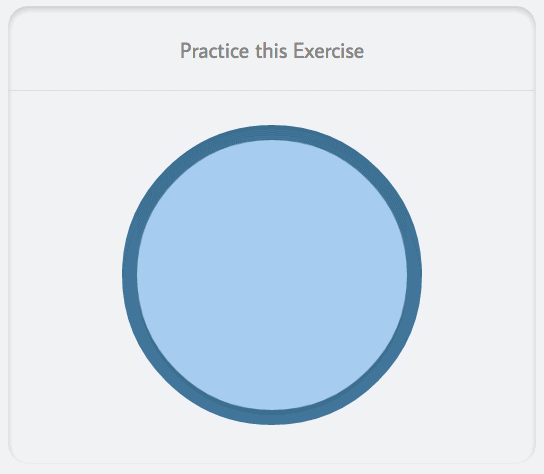
Leave a Reply